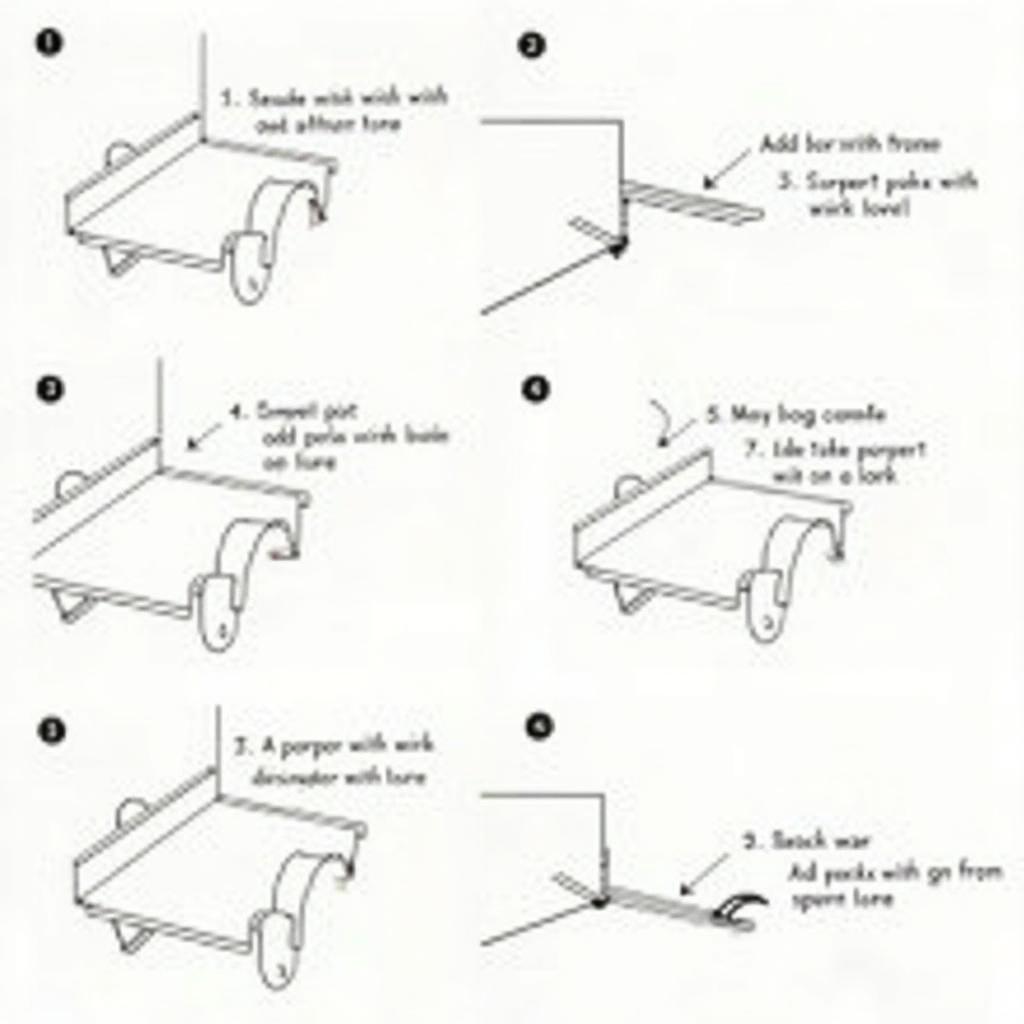The trailer parking warning sign – a small detail with significant importance. It signals to other road users that your trailer is parked and thus contributes to road safety. But when is it mandatory, what are the regulations, and what happens if they are not followed? In this article, you will learn everything you need to know about trailer parking warning signs.
What Does the Trailer Parking Warning Sign Mean?
The parking warning sign, also known as a warning marker board or parking plate, is an indispensable accessory for every trailer owner. It serves as a clear signal that a trailer is parked and can potentially pose a hazard to other road users, especially in darkness or poor visibility. From a psychological perspective, it conveys a sense of safety to other road users and helps prevent accidents. For car mechanics, understanding the regulations regarding parking warning signs is essential to correctly advise customers.
 Reflective red and white striped parking warning sign for trailers.
Reflective red and white striped parking warning sign for trailers.
Regulations Regarding the Parking Warning Sign
In Germany, the parking warning sign is mandatory for trailers parked on public roads when the trailer’s visibility is restricted. This is the case, for example, when the trailer is parked outside built-up areas or is obscured by other vehicles. Dr. Klaus Müller, an expert in road safety, emphasizes in his book “Sicher parken mit Anhänger” (“Safe Parking with a Trailer”): “The parking warning sign is an important element for preventing accidents and should always be used when visibility conditions require it.” The exact regulations are specified in the German Road Traffic Act (Straßenverkehrs-Ordnung – StVO).
When Must the Parking Warning Sign Be Attached?
The obligation to attach the parking warning sign exists when the trailer is parked outside built-up areas. Within built-up areas, it is only necessary if the trailer obstructs the view of other road users. The use of the parking warning sign is also recommended in poor visibility conditions, such as fog or darkness.
 Reflective trailer parking warning sign attached to the rear of a parked trailer.
Reflective trailer parking warning sign attached to the rear of a parked trailer.
Consequences of Non-Compliance with Regulations
Anyone who fails to comply with the regulations for the parking warning sign risks a warning fine. In the worst case, disregarding the rules can even lead to an accident, which can result in property damage as well as personal injury.
Advantages of the Parking Warning Sign for Car Mechanics
Car mechanics benefit from sound knowledge about the parking warning sign, as they can provide comprehensive advice to their customers and point out the legal regulations. This strengthens customer trust and contributes to road safety.
Trailer Parking Warning Sign vs. Other Warning Devices
Compared to other warning devices, such as hazard lights, the parking warning sign is specifically designed for parked trailers and provides a continuous warning to other road users.
Important Notes on the Parking Warning Sign
Ensure that the parking warning sign is properly attached and clearly visible. It should be reflective to be easily recognized even in darkness.
 Illustrative image showing a trailer parking warning sign properly mounted on a trailer.
Illustrative image showing a trailer parking warning sign properly mounted on a trailer.
Frequent Questions About Trailer Parking Warning Signs
- When is the parking warning sign mandatory? Always outside built-up areas; within built-up areas when visibility is restricted.
- What penalties for non-compliance? Warning fine, in the worst case partial blame in an accident.
- Where can I buy a parking warning sign? At specialized retailers, car dealerships, and online.
More Information on autorepairaid.com
On autorepairaid.com, you can find more useful information on the topic of trailer repair and maintenance. Visit our website for more tips and tricks.
Need Help?
Our experts at autorepairaid.com are available 24/7. Contact us for personalized advice!
Conclusion
The trailer parking warning sign is a small but important detail that contributes to road safety. Pay attention to the regulations and ensure that your trailer is always clearly visible to prevent accidents.
